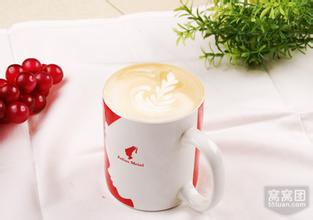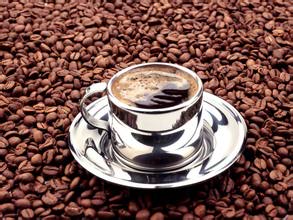Introduction to the characteristics of Guatemala Antigua Flower God Coffee Flavor Manor with delicate Flower scent
The architectural landscape of this small colonial town of more than 50 hectares is dominated by 18th-century baroque churches and monasteries. The city as a whole was rebuilt with several successive earthquakes, the city has the appearance of a defensive fortress, the walls are thick, and the towers are low and very colorful. Guatemala City (GuatemalaCity), the capital of Guatemala, the national economic and cultural center. In the southern volcanic area of the plateau, 1493 meters above sea level. The population is 2 million (1988).
Geographic environment editing
Antigua Guatemala is located in central Central America, built in the Panchoy Valley, 1500 meters above sea level, near Agua and Fu.
Antigua Guatemala
Antigua Guatemala
The summit of Mount Fuego.
108889 square kilometers, located in the north of Central America, bordering Mexico, Belize, Honduras and El Salvador. It is bordered by the Pacific Ocean to the south and the Gulf of Honduras in the Caribbean Sea to the east, bordering Mexico, El Salvador, Honduras and Belize on land. 2/3 of the territory consists of mountains and plateaus. There are Kuchu Matanes Mountains in the west, Madre Mountains in the south, volcanic belts in the west and south, with more than 30 volcanoes. Tahumurco volcano is 4211 meters above sea level, which is the highest peak in Central America. Earthquakes are frequent. There are Petten lowlands in the north. There are narrow coastal plains on the Pacific coast. The major cities are mostly distributed in the intermountain basins in the south. Located in the tropics, the northern and eastern coastal plains have a tropical rain forest climate, and the southern mountains have a subtropical climate. The year is divided into two dry and wet seasons, with wet seasons from May to October and dry seasons from November to April of the following year. The annual precipitation is 2000-3000 mm in the northeast and 500-1000 mm in the south. Forests account for half of the country's area, especially in the lowlands of Peteng, which are rich in valuable wood such as mahogany. Mineral deposits include lead, zinc, nickel, copper, gold, silver, oil and so on.
The northern lowland plain Peten is a tropical rain forest, the central highlands have volcanoes of up to 4200 meters, and the narrow and fertile flatlands on the banks of the Pacific Ocean have a tropical climate. The central plateau is also the cultural center of Guatemala, where temperatures are mild all year round at an altitude of 1300 to 1800 meters, with daily temperatures between 18 and 28 degrees Celsius, and higher levels tend to be colder in January and February. Guatemala City, the capital of Guatemala, is also here. With 2.5 million residents, it is the largest city in Guatemala. Tourist centers include Lake Attila, the old capital of Old Guatemala, the ancient Mayan city of Tikal and some other famous cities such as Kesaltnango and Chichikas de Nango. Population 12.6 million (2007). It has the largest population and the highest proportion of indigenous peoples in Central America, with Indians accounting for 53 per cent, Indo-Europeans accounting for 45 per cent and whites accounting for 2 per cent. The official language is Spanish, as well as 23 native languages such as Maya. 75% of the residents are Catholic and 25% are Protestant.
Coffee was really introduced into Guatemala in 1750 by Father Jesuit, where the coffee industry was developed by German colonists at the end of the 19th century. Today, most of the coffee industry's production takes place in the south of the country. Guatemala has seven main coffee producing areas: Antigua (Antigua), Cobain (Coban), Lake Attilan (Atitlan), Vevetnango (Huehuetenango), Farahan Plateau (Fraijanes), Oriente (Oliente) and San Marco (San Mareos). Each region has its own climate change, so the coffee beans in each region have their own characteristics, but to sum up, Guatemalan coffee has a mild and mellow overall texture and elegant aroma. With similar hot and pleasant acidity such as fruit acid, Guatemala has become an aristocrat in coffee. Coffee has won a lot of praise for Guatemala, especially Antigua coffee, which has a perfectly coordinated sour, sweet and mellow texture, coupled with a hint of smoke and a sense of mystery, and you will have a reason to stop looking for alternatives after tasting it. Antigua coffee is also known as "cigarette coffee" because of its unique charcoal incense.
Antigua's "Antigua Flower God" is the best of Antigua coffee, which belongs to the famous beans of the well-known La Minita group. Produced by Las Pastores Beneficio, a well-known processing plant in Antigua.
Antigua Flower God comes from the high altitude in the center of the volcanic area of Antigua. Costa Rica's famous Raminita estate provides the industry's highest standard of planting and processing technology, and directly sends special personnel to Antigua to participate in quality control, and entrusts Antigua's largest Bastol washing treatment plant (Pastores mill) with the highest standard of post-harvest treatment, under the supervision of raw bean handling and cup testing control by Raminita quality control personnel. A strict procedure has been established, from purchasing coffee berries to washing, drying and drying, so it is not surprising that this coffee has an outstanding performance.
"Flower God" as its name, beans have a beautiful appearance, after brewing, there are fine flowers and fruit sweet, taste can feel cocoa bitter and caramel sweet, light smoky taste, red wine finish is obvious, the overall taste is clean and bright.
At present, some of the best quality coffee from Guatemala is exported to Japan, where each cup of coffee sells for $3 to $4. Moreover, Guatemala has specially set up a special coffee association and gives the greatest funding and attention to these high-quality Russian coffee. These efforts soon bear fruit. From October 2006 to May 2007, Guatemala's coffee exports accounted for 3.5% of the world's total coffee exports, making it the fifth largest coffee exporter in the world. The real beneficiaries of the development of the coffee industry in Guatemala are not only local coffee growers, but also coffee lovers all over the world.

Important Notice :
前街咖啡 FrontStreet Coffee has moved to new addredd:
FrontStreet Coffee Address: 315,Donghua East Road,GuangZhou
Tel:020 38364473
- Prev

The perfect Kenyan Kam Chuk Valley Coffee Flavor Features Boutique Coffee Introduction
On an international scale, the growth in Kenyan coffee production has been remarkable, with exports rising from 800,000 bags in 1969- 1970 to 2 million bags in 1985 - 1986. Production is now stable at 1.6 million bags, averaging about 650 kg per hectare. The average price of coffee in Kenya has been rising since before the recent spike. 1993--1994 The annual price is 12.
- Next

Introduction to the flavor and taste of Panamanian coffee manor with strong floral and citrus flavor
Coffee was first brought to Panama by European settlers in the 19th century. In the past, Panamanian coffee did not have a good reputation, and its output was only 1 / 10 of that of its neighbor Costa Rica, but now the coffee industry's focus on boutique coffee has made Panama more and more interested in growing coffee. Panama's geographical advantage is that it has a lot of distinguishing microclimate areas suitable for coffee.
Related
- Detailed explanation of Jadeite planting Land in Panamanian Jadeite Manor introduction to the grading system of Jadeite competitive bidding, Red bid, Green bid and Rose Summer
- Story of Coffee planting in Brenka region of Costa Rica Stonehenge Manor anaerobic heavy honey treatment of flavor mouth
- What's on the barrel of Blue Mountain Coffee beans?
- Can American coffee also pull flowers? How to use hot American style to pull out a good-looking pattern?
- Can you make a cold extract with coffee beans? What is the right proportion for cold-extracted coffee formula?
- Indonesian PWN Gold Mandrine Coffee Origin Features Flavor How to Chong? Mandolin coffee is American.
- A brief introduction to the flavor characteristics of Brazilian yellow bourbon coffee beans
- What is the effect of different water quality on the flavor of cold-extracted coffee? What kind of water is best for brewing coffee?
- Why do you think of Rose Summer whenever you mention Panamanian coffee?
- Introduction to the characteristics of authentic blue mountain coffee bean producing areas? What is the CIB Coffee Authority in Jamaica?

